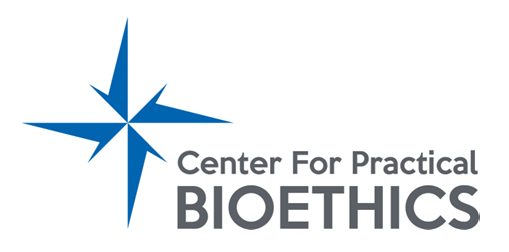The Case of Ginger: Autism and Blood Cancer Treatments
Print this case study here: Case Study – The Case of Ginger
 The Case of Ginger: Autism and Blood Cancer Treatments
The Case of Ginger: Autism and Blood Cancer Treatments
A 30-year-old woman, “Ginger,” is in the clinic, having been diagnosed several years ago with myelodysplastic syndrome (MDS, a blood disorder). There is a high chance that the disease will progress to acute myeloid leukemia (AML), with lower chance of survival, so physicians had started chemotherapy. This leads to other treatment decisions and dilemmas which become ethically complex.
Ginger has autism spectrum disorder and is mostly non-verbal but alert with a typically pleasant mood. She seems to enjoy life. Ginger likes to eat favorite foods, watch TV, especially movies, and enjoys her job at a sheltered workshop. She lives in a group home near her parents. She has housemates and 24/7 support persons who provide care and transportation. Her cognitive level is about that of a preschooler. Ginger’s parents are the legal guardians and make all healthcare decisions. “Maggie and Jim” are highly involved with their daughter’s care and are very concerned that she gets the best treatment possible for MDS. That might include allogeneic (using a donor) peripheral blood stem cell transplant (SCT, previously referred to as bone marrow transplant). They are told SCT is the only potentially curable treatment for this otherwise fatal disease. But how would an autistic adult like Ginger experience such a difficult treatment regimen, with 100 days of isolation while lacking and then hopefully rebuilding an immune system? How would she cope with the almost inevitable mouth sores and flu-like symptoms? Maggie and Jim don’t know. No one knows for sure. However, they note that their daughter is generally happy if she has TV to watch and good food to eat—both of which could be provided during recovery. She also responded well to one previous hospitalization and occasional illnesses throughout her life.
Several years ago, Ginger had been diagnosed with pancytopenia (a blood cell deficiency), and findings suggested early-stage MDS. Hematologists then also had recommended SCT, although with reservations given their patient’s autism. The significant risks of this procedure were discussed with Maggie and Jim. These include acute and chronic graft versus host disease (GVHD), both with varying rates of likelihood ranging from 30-70 percent. (1) In addition, the potential benefits of allogeneic SCT versus alternative treatment options were presented. At that time, after much deliberation and an ethics consultation, Ginger’s parents opted for stem cell transplant. However, the chemo regimen was working so well that the hemeonc team decided to “wait and see.”
Now that their patient’s myelodysplastic syndrome has progressed, treatment decisions once again need to be deliberated and made on Ginger’s behalf. Maggie and Jim are presented with options either to continue chemotherapy that is no longer very effective or to do the stem cell transplant as a potential cure, using matched unrelated donor cells. Parents are informed that, with SCT, the 3-year survival rate for MDS ranges from about 52-57 percent, depending on the type/relatedness of the donor. (2) Ginger’s prognosis, if they opt to continue chemotherapy, is worse. Median survival for patients with high risk MDS is 1-2 years. (3) Of course, a third option is to stop all treatments, transition to comfort care and eventually home hospice.
What ought Jim and Maggie do now for their beloved and very vulnerable daughter? They had decided once before that trying SCT could be worth the risks inherent to it, given the likelihood otherwise of Ginger’s death from cancer. But using other therapies then, she had beaten the odds and even avoided progression to leukemia. Might she do so again, this time using SCT with its increasingly high risks? Parents know that these risks include actually hastening death and increasing suffering. And would Ginger possibly suffer more than other SCT patients as a result of her autism? All these risks are weighed against the certainty, this time, that Ginger will die “if we do nothing.”
And then there is one other haunting question for parental decision-makers. If Ginger gets SCT and survives this, if she is cured of her cancer and then survives her aging parents, “who will take care of our daughter after we’re gone?”
Questions For Discussion:
- If this were your daughter and decision, what option would you choose on her behalf? Why?
- If Ginger were your patient, what options would you present to the parents, and how would you weight them in your presentation?
- How should Ginger’s disability inform her parents’ and providers’ evaluation of the risks and potential benefits of a stem cell transplant versus continuing worsening chemotherapy options—or of transitioning to comfort care only?
- Patients with disabilities are particularly vulnerable. What sort of policies should healthcare organizations have to ensure these patients are protected?
- Costs of treatment are never mentioned in this case scenario. Both chemotherapy and especially stem cell transplantation are very costly, easily $1M or more over time. Ought costs of treatment be considered when deliberating options for Ginger’s care? Why or why not?
Clint Cole, DO student
Leslie McNolty, DPS—Bioethics
Tarris Rosell, PhD, DMin
1. Leukemia & Lymphoma Society. Graft-Versus-Host Disease, https://www.lls.org/treatment/types-of-treatment/stem-cell-transplantation/graft-versushost-disease.
2. Health Resources & Services Administration. U.S. Patient Survival Report. U.S. Department of Health and Human Services, Dec. 2012, https://bloodcell.transplant.hrsa.gov/research/transplant_data/us_tx_data/survival_data/su rvival.asp.
3. American Cancer Society. Survival Statistics for Myelodysplastic Syndrome, accessed June 20, 2018. https://www.cancer.org/cancer/myelodysplastic-syndrome/detection-diagnosisstaging/survival.html


